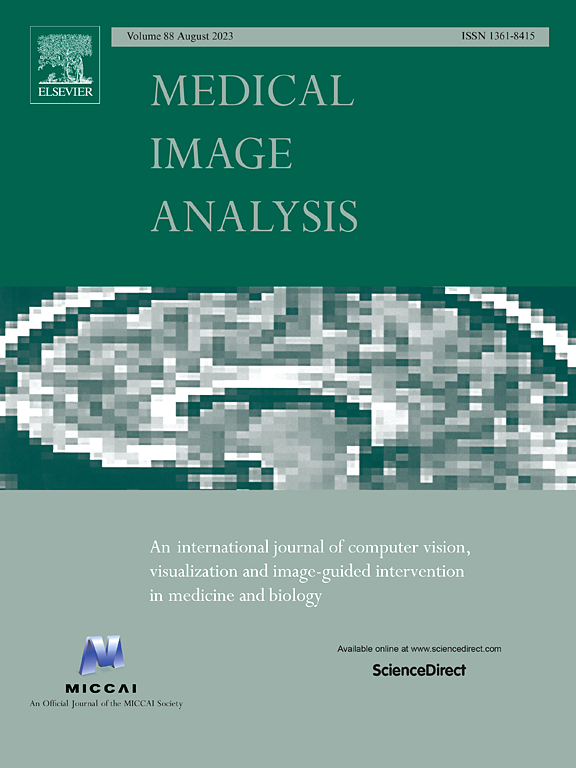发展中的人类连接体项目:一个快速的基于深度学习的新生儿皮层表面重建管道。
IF 10.7
1区 医学
Q1 COMPUTER SCIENCE, ARTIFICIAL INTELLIGENCE
引用次数: 0
摘要
发育中的人类连接组计划(dHCP)旨在探索围产期人类大脑的发育模式。已经开发出一种自动化处理管道,用于从dHCP新生儿数据集的结构脑磁共振(MR)图像中提取高质量的皮质表面。然而,目前该管道的实施需要超过6.5小时来处理一次MRI扫描,这使得大规模神经成像研究成本高昂。在本文中,我们提出了一种基于深度学习(DL)的快速管道用于dHCP新生儿皮质表面重建,包括基于DL的脑提取、皮质表面重建和球面投影,以及gpu加速的皮质表面膨胀和皮质特征估计。我们引入了一个多尺度变形网络来学习从t2加权脑MRI端到端的微分形态皮质表面重建。集成了一种快速无监督球面映射方法,以最小化皮质表面和投影球体之间的度量畸变。在现代GPU上,我们基于dl的dHCP管道的整个工作流程仅在24秒内完成,比原始dHCP管道快了近1000倍。定性评价表明,在82.5%的测试样本中,我们基于dl的管道重建的皮质表面质量优于(54.2%)或等于(28.3%)原始dHCP管道。本文章由计算机程序翻译,如有差异,请以英文原文为准。
The Developing Human Connectome Project: A fast deep learning-based pipeline for neonatal cortical surface reconstruction
The Developing Human Connectome Project (dHCP) aims to explore developmental patterns of the human brain during the perinatal period. An automated processing pipeline has been developed to extract high-quality cortical surfaces from structural brain magnetic resonance (MR) images for the dHCP neonatal dataset. However, the current implementation of the pipeline requires more than 6.5 h to process a single MRI scan, making it expensive for large-scale neuroimaging studies. In this paper, we propose a fast deep learning (DL) based pipeline for dHCP neonatal cortical surface reconstruction, incorporating DL-based brain extraction, cortical surface reconstruction and spherical projection, as well as GPU-accelerated cortical surface inflation and cortical feature estimation. We introduce a multiscale deformation network to learn diffeomorphic cortical surface reconstruction end-to-end from T2-weighted brain MRI. A fast unsupervised spherical mapping approach is integrated to minimize metric distortions between cortical surfaces and projected spheres. The entire workflow of our DL-based dHCP pipeline completes within only 24 s on a modern GPU, which is nearly 1000 times faster than the original dHCP pipeline. The qualitative assessment demonstrates that for 82.5% of the test samples, the cortical surfaces reconstructed by our DL-based pipeline achieve superior (54.2%) or equal (28.3%) surface quality compared to the original dHCP pipeline.
求助全文
通过发布文献求助,成功后即可免费获取论文全文。
去求助
来源期刊

Medical image analysis
工程技术-工程:生物医学
CiteScore
22.10
自引率
6.40%
发文量
309
审稿时长
6.6 months
期刊介绍:
Medical Image Analysis serves as a platform for sharing new research findings in the realm of medical and biological image analysis, with a focus on applications of computer vision, virtual reality, and robotics to biomedical imaging challenges. The journal prioritizes the publication of high-quality, original papers contributing to the fundamental science of processing, analyzing, and utilizing medical and biological images. It welcomes approaches utilizing biomedical image datasets across all spatial scales, from molecular/cellular imaging to tissue/organ imaging.
 求助内容:
求助内容: 应助结果提醒方式:
应助结果提醒方式:


